2019’s Top Film Schools Around the World
- Oops!Something went wrong.Please try again later.

Where does the path to diversity begin? What kickstarts fearlessness and the will to win, to create, to innovate? How do aspiring entertainment artists and executives develop the skills to tell tomorrow’s stories and find the tools to build the next generation of platforms to sustain an industry where disruption is the new normal? Without the educators and programs in these pages, the voices of underserved youth will never be heard, and their visions will never change the world.
We look not only at top universities offering cutting-edge instruction in everything from cinematography to costume design, but also at speak to educators and look at educational tools that build knowledge of multi-ethnic music, art, writing and film. Entertainment education has never been more important.
More from Variety
American Film Institute
Los Angeles
The prestigious AFI Conservatory runs six distinct MFA programs: cinematography, directing, editing, production design, screenwriting and producing. Veteran D.P. Stephen Lighthill runs the cinematography program, which boasts among its alumni Rachel Morrison, who was nominated for an Oscar for her work on “Mudbound.” Oscar nominee Lianne Halfon (“Juno”) runs the producing program. AFI also features two intensive tuition-free programs: a directing workshop for women and cinematography. Faculty and fellows also mentor young women in AFI’s Young Women in Film program.
Art Center College of Design
Pasadena
Art Center’s film department offers a three-track curriculum, focusing on directing, editing and cinematography, with students receiving a proper overview of all aspects of storytelling. The school takes a learning-by-making approach, so that upon graduation, not only will students have a completed film of their own to show as well as an overall reel of their accomplishments, but they’ll also have been exposed to industry-standard technology and processes that will help them start off on the right foot. Students are encouraged to develop and produce as much content as they can.
Beijing Film Academy
Beijing
Established in 1950, the academy is the lone institution of its type in China, while also serving as the largest film school in all Asia. With China becoming the world’s fastest-growing film market, more interest and importance has been placed on the country’s quest to both produce its own films and bring in talent from all over the world. With four professional studios at its disposal, the academy utilizes state-of-the-art equipment, and gives each student an overall education in production, creation, teaching, research and global film history.
Belmont University
Nashville
With a faculty comprising industry professionals, the Belmont motion pictures department strives to give each student a full-bodied approach to filmmaking and storytelling. Students will shoot and edit their first film immediately after the semester starts. Students also have access to Dolby Atmos sound-mixing equipment (the rare school to offer this emerging technology) and a 250-seat theater. Classes are offered in directing, writing, creative producing, screenplay analysis, cinematography, set management, film history and genre studies, among others.
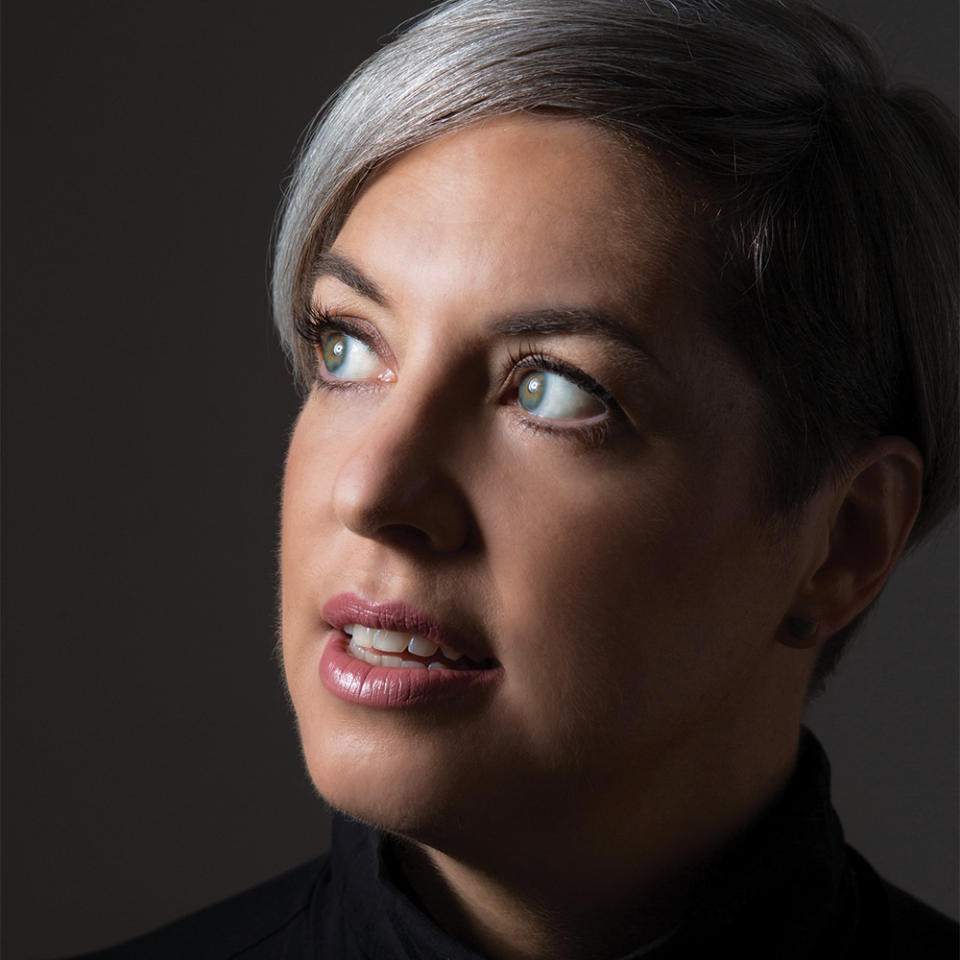
Courtesy of Donovan Freberg
Camille Benda
California Institute of the Arts, Valencia
“We think of our costume designers as storytellers,” says Camille Benda, a veteran costume designer and a member of the faculty in the costume design program in the CalArts School of Theater. To that end, BFA and MFA students are immersed in an interdisciplinary program that explores many different mediums, from film and video and history to new technology like virtual and augmented reality. “We might look at a 19th-century dress in dress form, draw it in real life, and then walk to the VR lab and draw that dress in a 3D digital space,” Benda says.
Biola University
La Mirada
Biola’s School of Cinema and Media Arts is in a prime location just 20 minutes from Los Angeles, offering students the chance to break-out quickly once they graduate. Boasting $3 million in state-of-the-art technology and equipment, the School of Cinema and Media Art offers courses in both technical and creative aspects of filmmaking, with overall concentrations in entertainment producing, game design and interactive media, production, and writing for film and television. Students also have 24-hour access to the 10,000-sq.-ft. studio.
Boston University Dept. Film & Television, College of Communication
Boston
Boston U.’s College of Communication Film & Television program is a popular East Coast establishment, offering students a B.S. and allowing them to choose from a variety of courses, including production, screenwriting, and film and TV studies, in addition to various general cinema courses. With small teacher-to-student ratios, hands-on learning is encouraged to forge strong relationships. The school also offers butv10, an award-winning content distribution network that’s managed and produced by students, and each student is encouraged to tailor-make the learning experience among others.
Centro de Capacitacion Cinematografica
Mexico City
Established in 1975, Centro de Capacitacion Cinematografica (CCC) serves as a public federal film school, focusing on and promoting strong personal viewpoints within the context of filmmaking. All of the school’s professors are working film industry professionals who also serve as mentors. The school is fully equipped to enable students to successfully complete their films from page to screen. The CCC offers a two-year scriptwriting and audiovisual cinematography production course, as well as a continuing education program that is open to the general public. A special documentary program for indigenous filmmakers has been a highlight at the CCC.
California State University
Northridge
The Department of Cinema and Television Arts has become one of the most sought-after programs in Los Angeles, offering seven programs of study, as well as access to the best equipment and facilities available, including industry-standard film and television sound stages, suites for post-production and sound-mixing, a new media lab, suites for animation and digital/visual effects artists, and a 130-seat screening room. Alumni from the program work all across the entertainment industry, while students benefit from the school’s deep relationships with networks, production companies and studios. The CSUN Cinematheque runs a regular film series for students and the public.
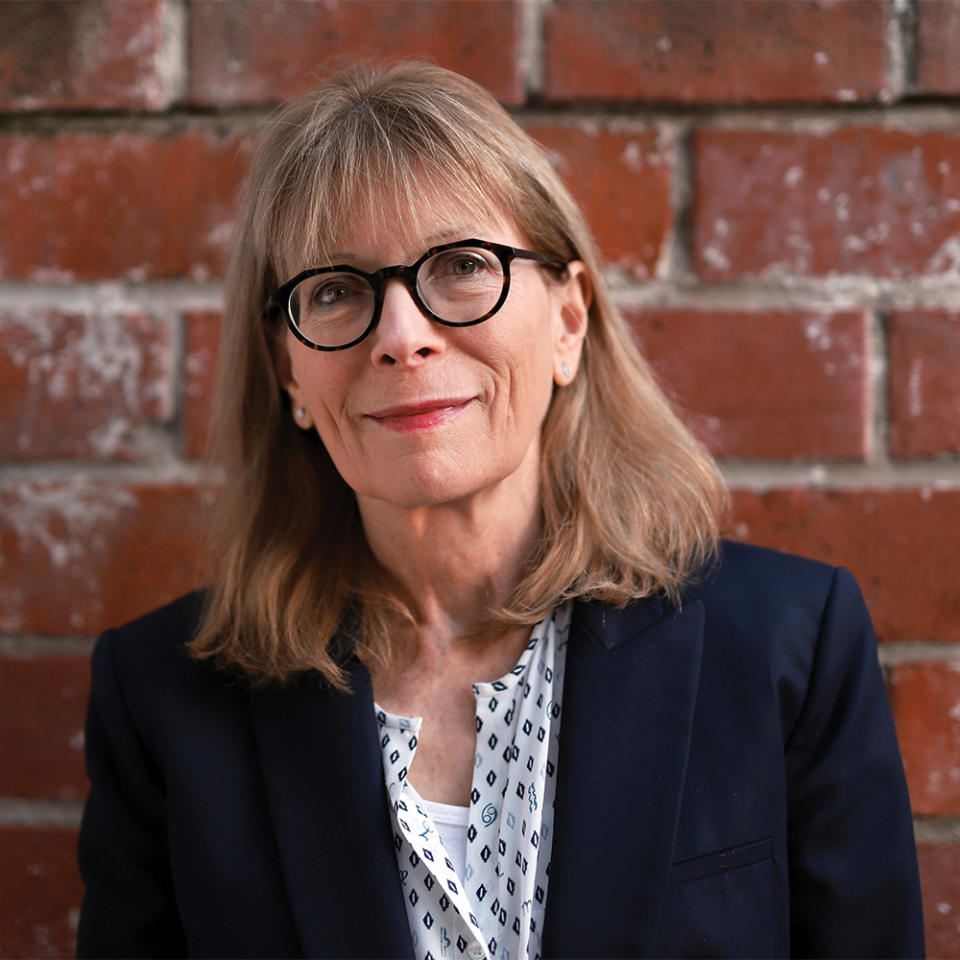
Courtesy of Elizabeth Feirstein
Madeline Warren
Associate Professor, Chapman University, Dodge College of Film & Media Arts, Orange
Veteran motion picture executive and producer Madeline Warren has a direct role in helping to shape the curriculum for both producing and screenwriting students at Chapman College. The artistic faculty associate professor provides freshman creative producers with first-hand experience in the key roles on a film through her filmmaking fundamentals class, while in her senior thesis and thesis development course, she serves as a mentor to guide scripts through the phases of development and creative change. She is also a key figure in the introduction of VR and AR as minors into Chapman’s curriculum. “We’re very happy to be at the forefront of this technology within the film school,” she says.

Courtesy of Kyle Steinbrinck and James Tharp
Galina Boulgakova
Head of Acting/Directing for the Screen program Colorado Film School Denver
For her students, Galina Boulgakova is part acting coach, part spiritual guru. “The film industry can change people’s lives — for good or bad,” she says. “That’s why as entertainment educators, we need to … build the whole person with heart, spirit and soul.” Boulgakova may be a master practitioner of the Stanislavsky method, but over the past 17 years she has pioneered her own technique. “The most innovative aspect of the training I offer is to disconnect from any character safely. This is called the Disconnection Process,” she says. “By understanding the psychology of the character’s behavior, we can apply this process of reprogramming on our own life. Our own behavior. It makes us healthier and more balanced as humans and as artists.”
Columbia College
Chicago
The Cinema and Television Arts department at Columbia College strives to give students a rich film school experience, combining informative classroom lectures on film history and analysis with nearly immediate physical filmmaking taking place upon enrollment. The CTA offers both undergraduate programs and graduate degrees, with focuses in film, television, documentary, cinematography, creative producing, writing for television and cinema directing. The department boasts cutting-edge post-production center with audio suite, as well as a 35,000 sq.-ft. media center, which houses twin soundstages and a motion-capture studio. Multiple screening rooms are on site for student use.
Columbia University School of the Arts
New York
Old-world prestige combined with modern educational flourishes makes Columbia University School of the Arts a top national choice, with of a faculty made up of working professionals from both Hollywood and the independent filmmaking realm. Its diverse and eclectic New York City location provides students with multiple degree programs that stretch across all facets of the creative process. Offering film MFA programs in screenwriting/directing and in creative producing, School of the Arts also provides students with the ability to achieve an M.A. in film and media studies, as well as in undergraduate film and media studies.
DePaul University
Chicago
The School of Cinematic Arts specializes in live-action and animation storytelling and filmmaking, providing students with everything they need to realize their cinematic dreams. Three professional soundstages are for student use, as well as greenscreens, a 3-ton grip truck and scenic shop, with camera equipment ranging from Arri to RED cameras, as well as an editing suite and mixing-studio locations. B.A. and BFA degrees in film and television are offered to students . In conjunction with the world-famous Second City, BFA and MFAs in comedy are also available to students seeking a speciality in comedy directing.

Courtesy of Weiko Lin
Weiko Lin
Associate Professor, Emerson College, Boston and Los Angeles
Weiko Lin teaches two courses at Emerson College Boston and its semester-long Los Angeles program built around networking opportunities and professional internships designed to help launch students in visual and media arts studies. His anatomy of film and television course focuses on the current state of the entertainment biz. Meanwhile, in his feature-writing workshop, students complete a first-draft screenplay. Lin also publishing a book in July titled “Crazy Screenwriting Secrets: How to Capture a Global Audience.” “Students get a whole spectrum of inclusivity,” says Lin, who was born in Taiwan and raised in Pasadena. “In class, every question I ask is how to do we see inclusivity? How do you see the global landscape?”
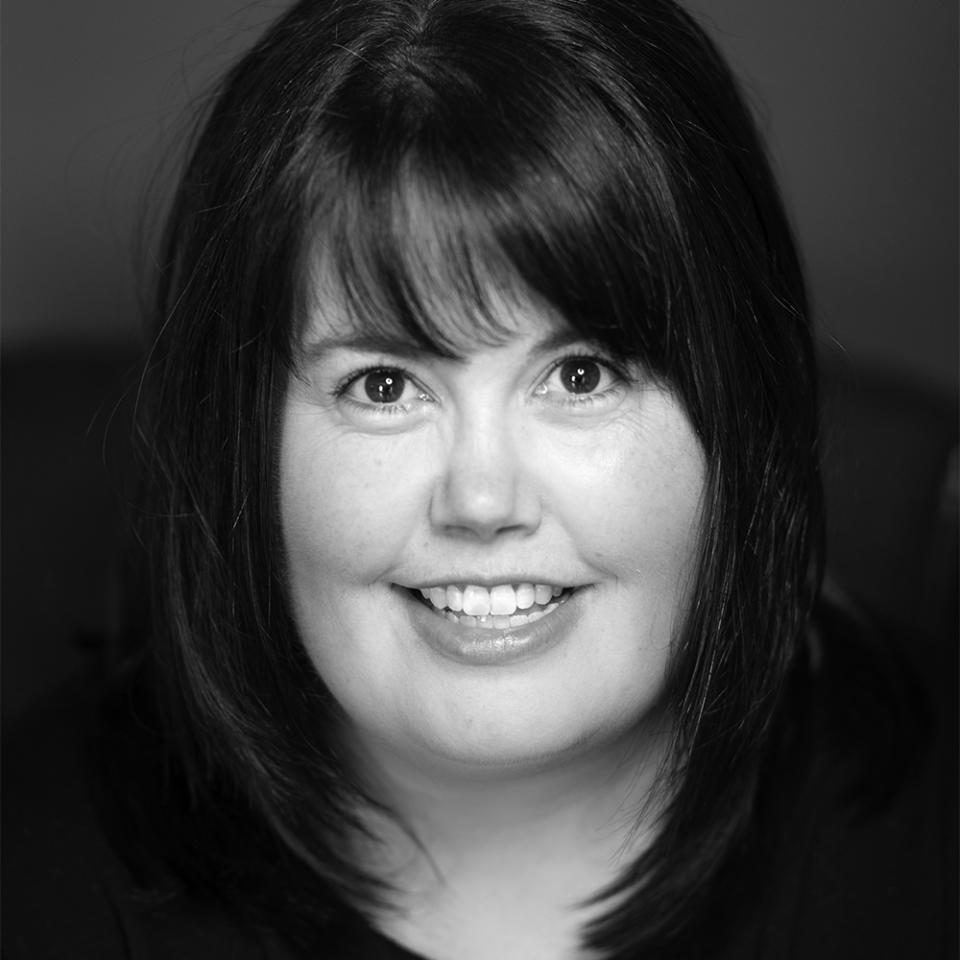
Courtesy of Chelsea Fausel/Fausel Imagery
Chrissy Guest
Assistant Professor in Media Arts, Sciences and Studies, Ithaca College, Roy H. Park School of Communications, N.Y.
An assistant professor in Media Arts, Sciences and Studies at Ithaca College, Chrissy Guest also brings her background in documentary filmmaking and broadcasting to her directing and television production courses. Guest’s classes provide not only hands-on experience, but also in-depth discussion of the social and cultural implications of a media career. “They will have such responsibility for everything they do,” she says. “This generation is looking at how they will make sense of social changes and how people are represented or accepted in society. They will impact so much of what we look back on, and what we become.”
Korean Academy of Film Arts
Busan
Established in 1984, the Korean Academy of Film Arts (KAFA) offers courses in film directing, animation, cinematography and producing. Because the school only selects a small number of students, the programs are highly intensive and hands-on. KAFA also offers an advanced program for those students who wish to take their careers one-step further. A 3D film production course created in 2012 called KAFA+ NextD allows students to experience the sensory-expanding, full-immersion technology, while KAFA+ Global’s Pre-Biz Program gives students a comprehensive financial overview of the industry.
Florida State University, College of Motion Picture Arts
Tallahassee
The College of Motion Picture Arts at FSU has been on the cutting-edge of student film production for more than 30 years, with 97% of graduates finding industry work within one year of completion. With 24/7 access to gold-standard production facilities, the program boasts a 5:1 student to faculty ratio, with 100% of student productions funded by the program. On offer are BFAs in motion picture arts as well as graduate programs that cover live-action and animated storytelling techniques. The Torchlight Program covers the business end of the industry.
London Film School
Created in 1956, London Film School offers master’s degrees in filmmaking, screenwriting and international film business, as well as a doctorate in film by practice, encouraging students to expand their cultural horizons. Located in Covent Garden (and therefore neighboring Soho, which serves as a major U.K. hub for film production) at a converted brewery, the facilities give students top-flight equipment. Also offered are tailored workshops and summer programs.
The Los Angeles Film School
Offering both on-campus and online degree programs, LAFS has course concentrations in entertainment business, animation, film, music and audio, while the online departments include graphic design and digital filmmaking. With a conservatory structure, the school gives students the chance to select a focused educational path. And because of its ideal location, it’s not hard to see how various alumni have gone on to exciting jobs at companies including Marvel, Activision, ABC, Disney, DreamWorks and NBC. LAFS offers fully operational soundstages, animation labs and recording studios.
FAMU
Prague
FAMU is the fifth-oldest film school in the world, centered in historic Prague, which enabled students to explore the country’s rich history through the cinematic arts. The film and TV school offers multiple three-year masters programs geared toward various avenues of filmmaking, with concentrations in writing, directing, editing and cinematography. Filmmaking in 16mm and 35mm is encouraged, while the latest in digital filmmaking equipment is provided to students. For Czech-speaking students, a one-year production team studies program is offered. Summer workshops and international exchange programs are also available.
La Femis
Paris
An active member of the European Film School Network and funded by France’s National Centre of Cinematography and the Moving Image, La Femis was created in 1986 as a non-profit to provide a continuous cinematic education. Students receive training in directing, cinematography, producing, screenwriting, editing, sound production, production design, continuity, distribution and cinema management. In 2013, the school unveiled two more programs — TV Series Development and a doctorate in art and design. About 500 professional and highly trained tutors serve as the school’s faculty members, with various exchange programs also available.
Lodz Film School
Poland
For more than 70 years, Lodz Film School has been one of the best-respected institutions in all of Europe, with students receiving a full-bodied education covering film, photography, acting and television. There are four departments at Lodz, including film and television directing, direction of photography and TV production, acting and film art organization. More than 300 film projects are created yearly by students, while the school’s multimedia assistance department provides students with all their technical and production needs. The school’s vast film library is home to more than 4,000 titles on DVD and Blu-ray.
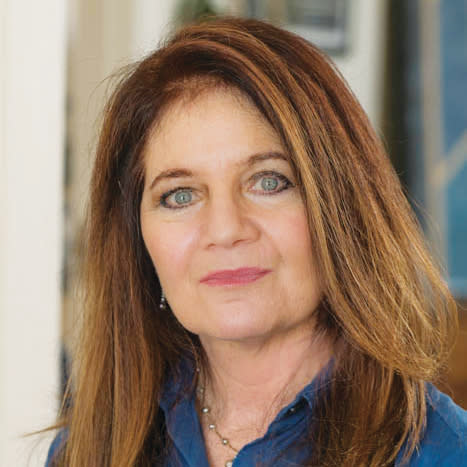
Courtesy of Geoff Schaaf
Patricia Meyer
Clinical Assistant Professor and Graduate Director of Screenwriting, Loyola Marymount University
A professional screenwriter for approximately 30 years, Patricia Meyer, clinical assistant professor and graduate director of screenwriting at Loyola Marymount University, understands the challenges of a career in writing for media. “I really impress upon students that this is a business to get into if you live and breathe stories, and you have to write, no matter what,” she says. For those with the “fire in the belly” to make screenwriting a career, she offers not only personal insight into her own career — “I want them to feel that I’m among them,” she says — but also career prep through intensive face-to-face pitch practice with industry figures.

Courtesy of Ashley Love-Mills
Avery O. Williams
Clinical Assistant Professor and Professor in the Cinema, Television and Emerging Media Studies program, Morehouse College Atlanta
Perhaps the most essential part of Avery O. Williams’ job — in his eyes — is not even in his job description. “It is important for me to also serve as a career counselor … I incorporate conversations [with students] concerning clarity in career objectives and time management,” says the seasoned screenwriter and director. And that’s not all: “I will often go out to their film shoots and serve as a crew member — to offer advice and to demonstrate the work ethic needed to thrive.” Williams recreates in his classroom the pressure aspiring TV writers will inevitably encounter in the real world.
Pepperdine University
Malibu
Pepperdine’s Seaver College offers majors and minors in film studies and production. The school places an emphasis on exploring film as a cultural force, and how it influences and interconnects with religion, gender, politics and race. Film studies majors are prepped for careers in directing, acting, producing, critical analysis, animation, documentary, broadcast news, editing, marketing, creative activism, camera operation, and post-production work. Because of its unique location outside Los Angeles, students don’t have to travel too far when searching for full-time employment within the industry.
Northwestern University
Evanston
Northwestern’s department of radio/television/film offers students the opportunity not only to create content for movies and TV but also the chance to get grounded in history and critical analysis. Programs include an M.A. in sound arts and industries, MFAs in writing for the screen and documentary media, and a doctorate in screen cultures. Alumni include Miguel Jiron, a storyboard artist on the Oscar-winning “Spider-Man: Into the Spider-Verse,” and Ilana Peña, who co-wrote the series “Diary of a Female President,” which has been given a straight-to-series order from Disney’s forthcoming streaming service.
Mount Saint Mary’s University
Los Angeles
Located at the historic Sunset Gower Studios, MSMU’s film, media, and communication department boasts a 16-acre creative media production campus, which is centrally located in the heart of Hollywood. Students are able to access 12 soundstage facilities, as well as 368,000 square-feet of office and support space for any size production. B.A.s in film and media, and journalism and new media are offered, as well as BFAs in professional photography and B.S. in film, media and social justice studies. Once enrolled in a B.A. or B.S. program, students choose an area of emphasis.
New York Film Academy
New York
The New York Film Academy purports to offer “the most hands-on intensive programs in the world.” Students can opt to study at no fewer than four locations in the U.S. and seven others scattered throughout the rest of the world. Its innovative and timely areas of study include game design, virtual reality and 3D animation as well as more traditional filmmaking. Students have the option of one or two-year conservatory programs, three undergraduate options (AFA, B.A. and BFA) and two graduate degrees (M.A. and MFA), but only the Los Angeles and South Beach, Fla., campuses offer degree programs.
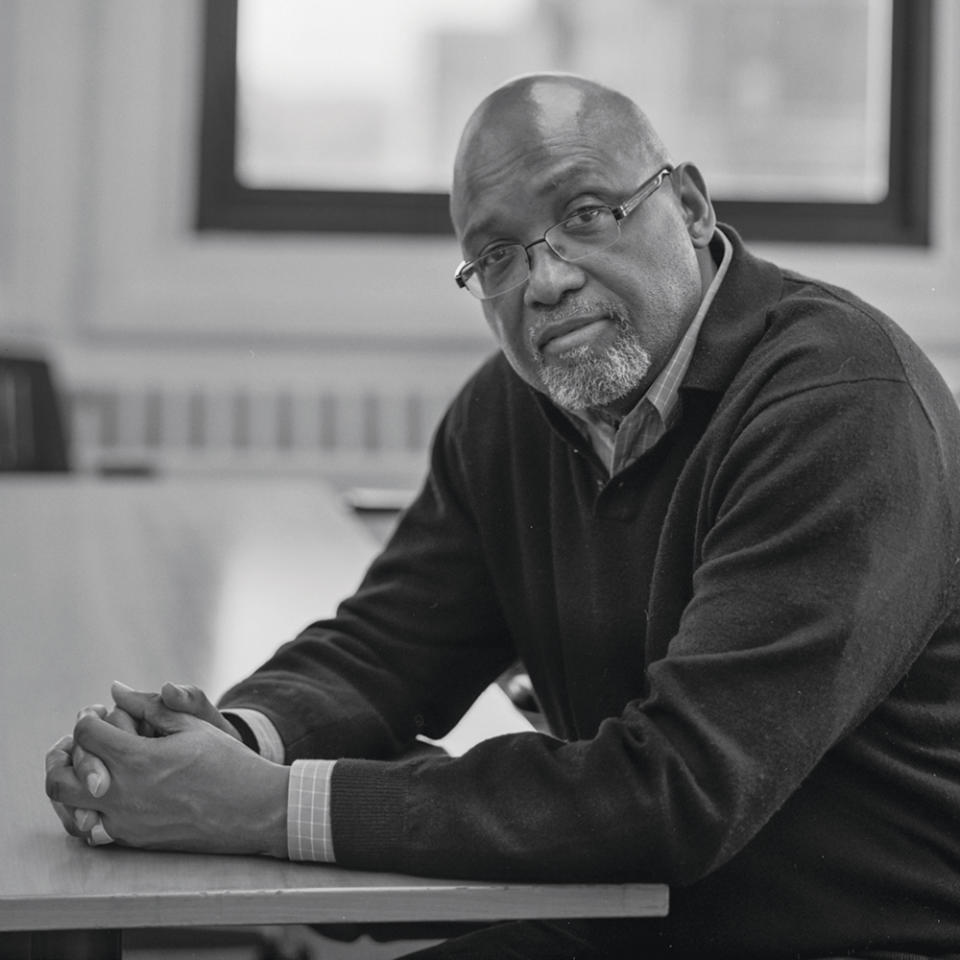
Courtesy of LaMont Hamilton
Sam Pollard
Professor of Undergraduate Film and Television, NYU Tisch School of the Arts
“I don’t think of myself as just an educator,” says Sam Pollard, a frequent Spike Lee collaborabor who has been teaching for more than 30 years. “Part of my role is to inspire, to challenge, to instigate, to be a provocateur, to say to these students: ‘The world is your oyster and you should drag on to it.’” “I’ll teach you how you should shape a film in terms of story arc — editorially or narratively — but you should bring something to the table that is special. What I always try to preach is not only understanding your craft but understanding that if you want to be a successful filmmaker, then you need to have a unique vision. ”
Pratt Institute
Brooklyn
Pratt’s Undergraduate School of Art/Film/Video offers prospective students a BFA in film, which will enable them to segue into the world of filmmaking and storytelling. Students are encouraged to explore different styles of the art form, including narrative, experimental, documentary, video art, and hybrid presentations. Creation is key at Pratt, where students almost immediately get to work on their own projects. By the completion of the BFA program, students should be fluent in critical cinema analysis as well as various aesthetic/production methods.
The Sam Spiegel Film & Television School
Jerusalem
Founded 30 years ago by the Israeli Ministry of Education and Culture and the Jerusalem Foundation, the institution formerly known as the Jerusalem Film and Television School was renamed after the Academy Award-winning producer of “On the Waterfront” and “Lawrence of Arabia” in 1996. Not surprisingly then, the school offers a program exclusively for aspiring producers. Training includes how to get projects off the ground, collaborating with directors, securing distribution deals and marketing. In addition there is a filmmaking program that covers screenwriting, production, directing, editing and cinematography. The school boasts that student films have won awards at top international film festivals (Cannes, Venice, Berlin) and 70% of its graduates secure jobs in the burgeoning Israeli film and TV industries.
San Francisco State University
San Francisco
The School of Cinema may have been founded back in the swinging ’60s but it has evolved right along with San Francisco’s transformation from the center of the hippie movement to a modern-day tech mecca. The school still believes in the old-fashioned value of a liberal arts education for its undergrads but students can specialize in three forms of filmmaking (fiction, experimental and documentary) along with the option of a minor in animation. The graduate program consists of an M.A. and MFA in cinema. Facilities include a soundstage, digital cinema lab, edit bays, sound mixing stages and a post-production lab. In memory of the avant-garde feminist filmmaker, the school has inaugurated the Barbara Hammer Awards, which celebrate student films with LGBTQ themes.
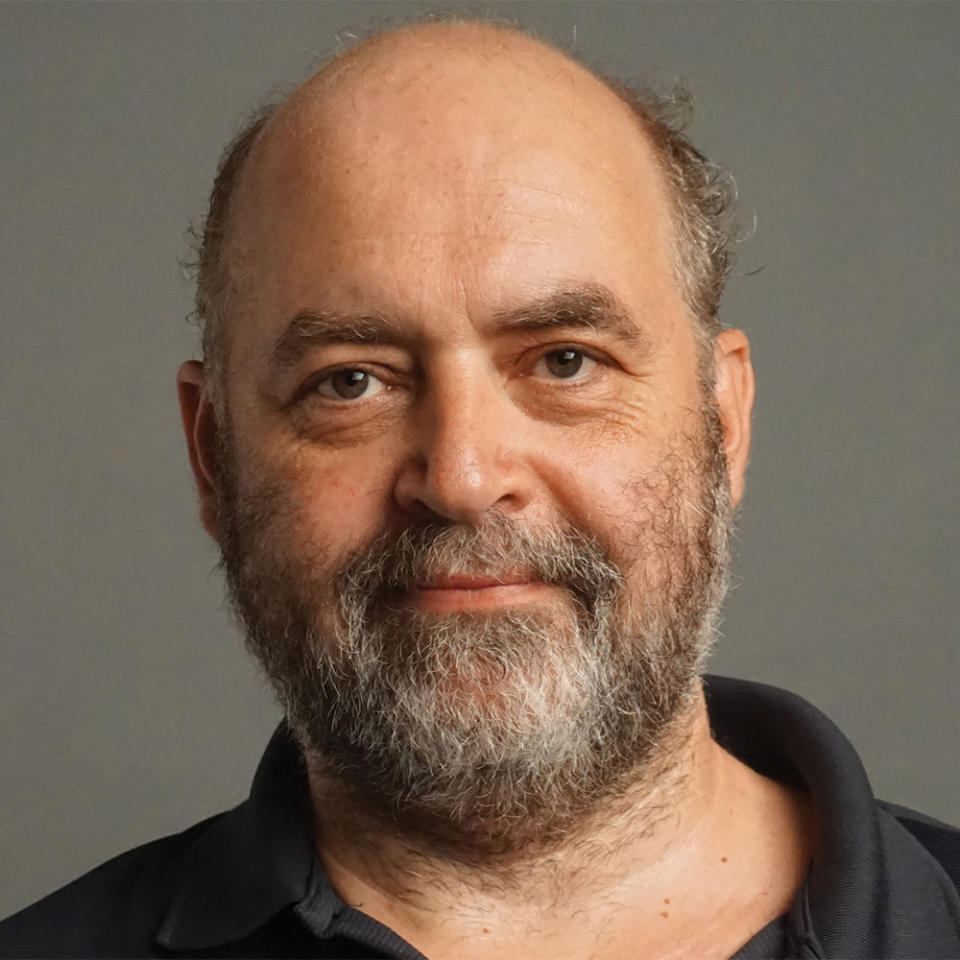
Courtesy of Tom Ackerman
Bob Keen
Department Chair of Visual Effects and Immersive Media, University of North Carolina School of the Arts
Keen, who serves as department chair of visual effects and immersive media at the University of North Carolina School of the Arts, brings more than 40 years of experience as a special and visual effects designer and supervisor and feature/second unit director to filmmaking students. Though the school has top-notch CGI facilities, Keen says he encourages students to think outside the box. “We teach them the old techniques as well as the new ones,” he says. “They struggle with the idea that there is always more than one way to do an effect. But we explore the whole gamut of possibilities.”
The Studio School
Los Angeles
The curriculum of the Studio School’s film and digital content BFA was created by Hollywood professionals and not academics. Students have the option of concentrating on directing, documentary film, producing, screenwriting, cinematography, editing, sound design or visual effects. They are guaranteed the opportunity to be mentored by experts in their chosen field along with the chance to display their work (and gain exposure) on multiple online platforms; they also have access to exclusive internships.
Syracuse University
New York
Students can choose between the S.I. Newhouse School of Public Communications and College of Visual and Performing Arts. The former offers a B.A. and an M.A. in television, radio and film, along with access to a student-produced, 24/7 television network, a work/study program in L.A. and Dick Clark Studios, a high-tech production space. The college’s department of transmedia offers the choice of four BFA and MFA programs: film, art photography, art video and computer art and animation. Students can also spend a semester at the Film and Television School of the Academy of Performing Arts in Prague.
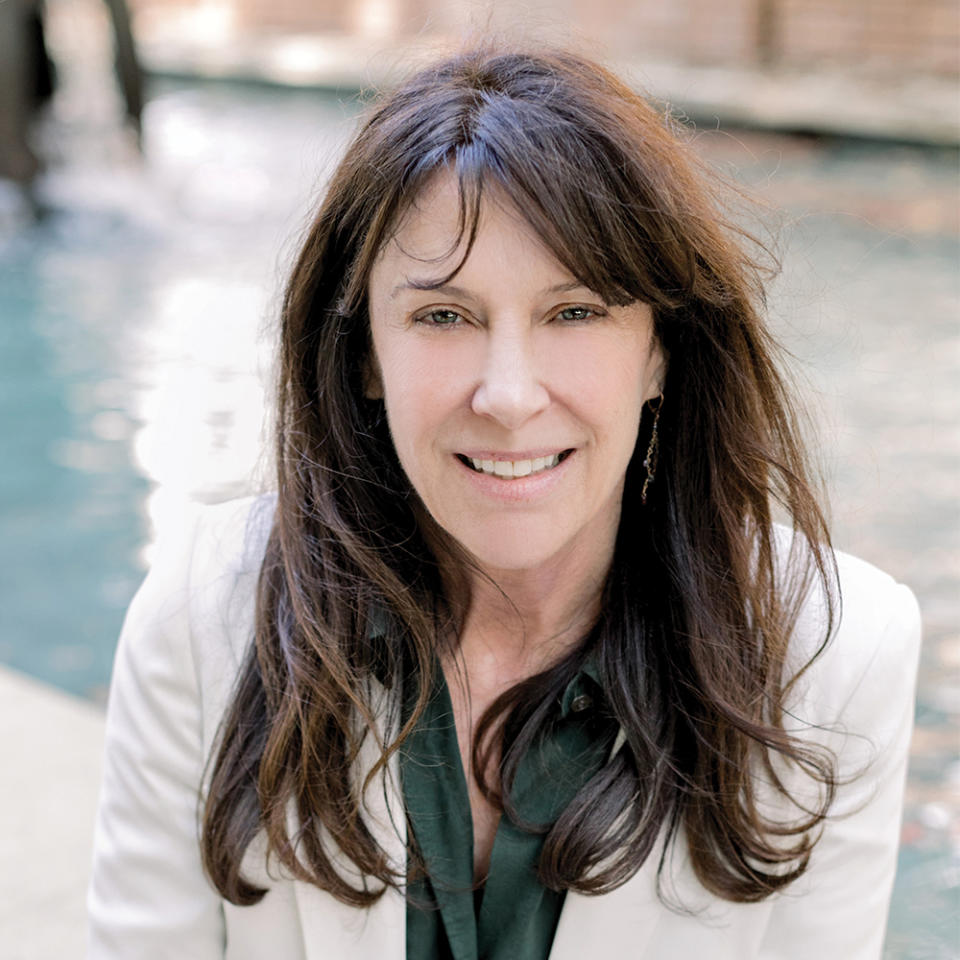
Courtesy of Molly + Co
Nancy Richardson
UCLA
Joe Russo AND JUSTIN LIN are among those who studied under Emmy-nominated film editor Nancy Richardson, professor and head of post-production at UCLA’s School of Theater, Film and Television. In addition to the technical aspects of post-production, she emphasizes “the communication aspect of filmmaking” in her classes. “Students need to come away with a sense of storytelling and judging the emotion of a scene,” she says. By drawing on diverse disciplines Richardson pushes her students to “think on a high creative level.”
UC Berkeley
California
Forbes recently ranked UC Berkeley one of the best-value colleges, which will no doubt be appreciated by students with loans that rival the budget of independent movies. The department of film and media emphasizes film history and theory for both undergraduate and doctorate students and electives in digital video production and screenwriting. Core courses include specific film genres, filmmakers and new media. Aside from its budget-friendly tuition, the biggest perk is an affiliation with the Pacific Film Archive, which offers visits from famous filmmakers and internship opportunities.
Stanford University
Palo Alto
Students pursuing a B.A. in film and media studies at Stanford are steeped in the history of world cinema. Students can also learn about the evolution of animation (from realist and abstract animation to CGI) and, for sci-fi fans, an entire course is devoted to cyborgs. But anyone who dreams of getting into the university’s MFA program in documentary production should have a back-up in mind — only eight students are accepted each year. Unlike at other universities, Stanford’s film and media studies is under the umbrella of the department of art and art history. Students learn about the history of the documentary genre, but they are also prepared to help redefine its future. The art of storytelling is the focus of year one and students get hands-on experience making movies with everything from 16mm film to digital video.
Savannah College of Art and Design
Georgia
SCAD offers three degrees in film and television (BFA, M.A. and MFA) in two locations: Atlanta and the school’s namesake city. Undergrads can choose to major in motion media design, television producing, visual effects and sound design. SCAD students have created everything from a sitcom that won the 2017 Student Emmy Award to, more recently, the opening visual for the Super Bowl. Students have access to the new Savannah Film Studios and a 60,000-sq.-ft. digital media center in Atlanta, tickets to the Savannah Film Festival in the fall and workshops celebrating a TV fest in the spring.
Sarah Lawrence College
Bronxville
The Filmmaking and Moving Image Arts program is all about where art and technology meet. Future filmmakers will find everything they need, including a 1,400-sq.-ft. soundstage, a recording booth, an editing lab, animation studio, screening room and a 185-person theater with a 4K digital cinema projector. Students can also take advantage of far-flung off-campus opportunities such as the semester-away program in Nantucket that allows them to gain practical work experience on a feature film set or study-abroad opportunities in Paris, Prague or Havana.
Universidad Del Cine
Buenos Aires
Founded in 1991 and located in the historic corner of Buenos Aires, the school offers undergraduate degrees in animation, multimedia and all the practical aspects of movie-making — from lighting and costume design to screenwriting, directing and film editing — in addition to a master’s in documentary filmmaking. Every year, students use two film sets on campus to produce more than 150 movies and the school boasts a screening room, a video library specializing in Argentinian cinema and the only 16mm laboratory in Latin America.
University of Wisconsin Milwaukee, Peck School of the Arts
The Peck School of the Arts’ film, video, animation and new genres program has earned a strong reputation as a top-choice for students looking for a full-spectrum entertainment industry education. The school places a dual focus on the practical and theoretical worlds of filmmaking and storytelling, giving students the flexibility to take on numerous fields of study. With a faculty comprising industry professionals and filmmakers, students will receive hands-on training that helps to raise confidence in their craft.
The University of Texas at Austin, Moody College of Communication
Students in the department of radio-television-film learn about the intersection of multiple media platforms and the art of creating compelling content, regardless of the format. The department offers a B.S. in addition to MFAs in both screenwriting and film and media production. As an added bonus, alum Matthew McConaughey swings by to teach a class from time to time.
USC School of Cinematic Arts
Los Angeles
The school first envisioned by Douglas Fairbanks turned 90 this year, but there’s nothing old-fashioned about its selection of female guest speakers for this year’s graduation festivities: commencement speaker Donna Langley, chairman of Universal Pictures, and Alumni Award recipient Nahnatchka Khan, a producer of “Fresh Off the Boat.” Aside from countless celebrity alumni, its major claim to fame is that it is one of the few media schools in the world to teach all the major disciplines of the cinematic arts.
University of Michigan
Ann Arbor
The department of film, television and media is all about the study of moving images and evolving screens (from the big screen to digital content viewed on tiny cell phones). Undergrads take courses in digital media studies and media production but also examine African-American cinema, the culture of anime, and race, gender and sexuality in video games. The department sponsors Wolf TV, a student-run television network featuring a multi-camera studio, as well as the Film & Video Student Assn. Graduate students in the doctorate program start working on research projects under the guidance of faculty in their first year, and the university offers to support them for up to five years. Additionally, they can take advantage of workshops focused on professional goals, summer research opportunities and teaching experience.
Vancouver Film School
British Columbia
VFS has maintained its position as one of the most sought-after destinations for film school students, due to its stunning geographic location, as well as the bustling Canadian film and television production market that has flooded the area over the past 20 years. Preparatory programs are offered as well as advanced programs in film and television, with concentrations in acting, directing, production, animation, cinematography, sound design, visual effects, and editing. Digital and video-game design courses are also available.
Wesleyan University
Middletown
The College of Film and the Moving Image incorporates the department of film studies, the Center for Film Studies, and the Ogden and Mary Louise Reid Cinema Archives. On offer to students are majors and minors in film studies and production, as well as special events and screenings. The importance of visual storytelling is stressed by faculty, with a focus on collaboration and analysis to achieve both personal and shared creative goals. The Center for Film Studies boasts two top-of-the-line cinemas, and the student-run Wesleyan Film Series, which offers nightly programming during the semester.
Yale University
New Haven
The film and media studies program offers students both undergraduate and graduate degrees and serves as the main hub for the study of the moving image and sound media at Yale. Undergraduate courses include dance on film, introduction to media, world cinema, film analysis, screenwriting, directing and war in literature in film. The graduate program, which began in 2002, provides courses revolving around Soviet cinema, semiotics, approaches to the urban screen and research in Japanese film history. The famous Yale Film Study Center is a popular destination due to its large and diverse selection of supporting materials.
Vanderbilt University
Los Angeles
The cinema and media arts department at Vanderbilt provides students with a general film education that revolves around history, theory and production. Taking a combination approach to the learning process, the interdisciplinary curriculum blends global film history with media theory, resulting in a rich course load that is culturally and ethnically enlightening as well as hands-on via training with 16mm and digital cinematography. Majors and minors are available, with courses including advanced screenwriting, global cinema, film philosophy and digital production. The Friday Film Club has become an extremely popular event.
Best of Variety
'House of the Dragon': Every Character and What You Need to Know About the 'Game of Thrones' Prequel
25 Groundbreaking Female Directors: From Alice Guy to Chloé Zhao
Sign up for Variety’s Newsletter. For the latest news, follow us on Facebook, Twitter, and Instagram.

